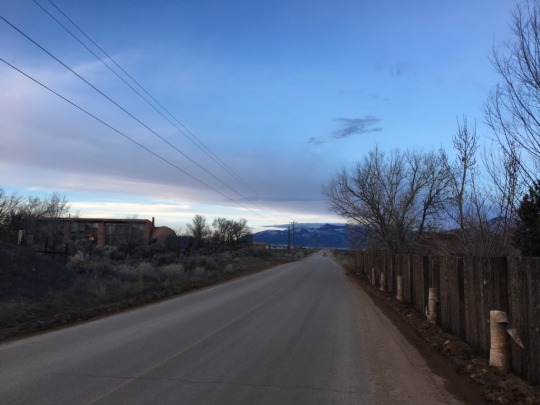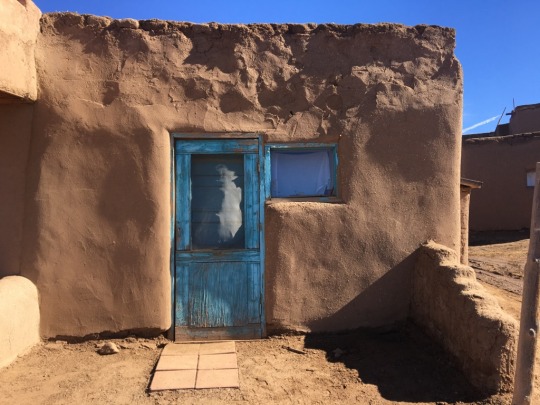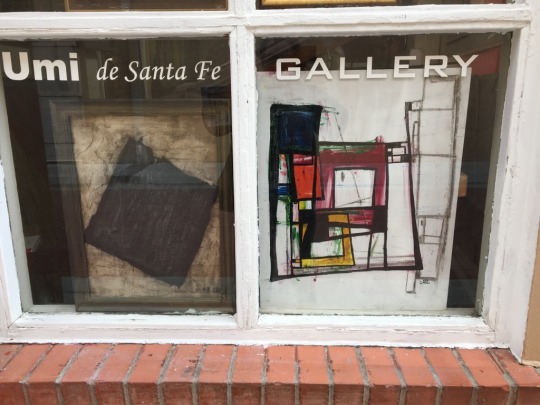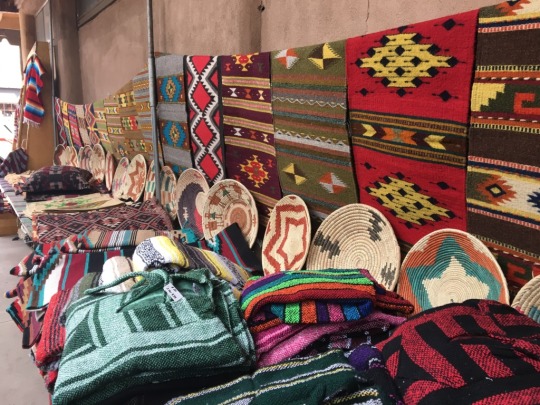#like imagine early humans seeing the paintings made 1000 years later
Explore tagged Tumblr posts
Text
i won't lie to you all, i'm still kind of obsessed with what chris nolan said at the oscars about how films have only been around for ~100 years, how they are still a very new art form, and how we have so much left to do and explore with them. imagine being in only the 1st century of painting, or writing, or sculpture. that's where we are with movies, and that blows my mind a little bit, to be quite honest.
#movies are still new#and i think if everyone remembered that a little more often#we'd be a lot more embracing of all types of movies.#like we created a wholw new art form and its only been around for a *fraction* of the time as anything else#idk why im so sentimental about this on this thursday eve#but like !! we are making and talking about the first movies still !!#in 500 years or 1000 years people will still be making movies and itll be so different#but theyll still be telling stories through a medium we were there for the 1st century of yknow 🥹🥹#like imagine early humans seeing the paintings made 1000 years later#or 10000 years later !! and seeing how we still put pigment to a canvas#sorry please ignore all of this
3 notes
·
View notes
Note
If you were to give Stands to other HPHM characters who would you see and he best candidates and why?
Starting with why: It's simply because I wanted to explore their characteristics more. It's in part why I initially cut it down to 4 others outside of Reina and Ricardo (Talbott, Rowan, Barnaby and Ben). Torvus was definitely a top contender but in the end I left him out since I've never drawn a centaur before and on top of that I wanted to keep the profiles to a minimum so I wouldn't be overwhelmed. I'm still not sure why I burn out easily. Just the 5 I worked on (Reina was already completed this time last year) took months of work, on and off.
For the time being I'm leaving the following 8 characters as ideas that I might get to at some point. I at least already figured out their powerset and even have placeholder names for each of their Stands (the only official one is Torvus'). Placeholder names will be highlighted in blue. Anyway, onto the chosen characters!
As usual, I tried to make it as short as possible but it still ended up being lengthy. Sorry about that XD
Torvus
I'd like to think his Stand manifested sometime after the arrowhead was stolen from him, and it helped contribute to his exile. Torvus wanted nothing to do with his Stand at the time, thinking it was some kind of bad omen. It wasn't until after befriending Reina that he understood that wasn't the case.
Stand: Sagittarius
Powers/Abilities: Can summon numerous arrows he can control the trajectory of. Can also create elemental arrows, allowing each type to produce different effects.
Jae
He'd totally have a Stand that would help him in seeking out and selling his contraband. It manifested for him some time before he started Hogwarts. As he's not confrontational, his Stand would also help him to avoid getting caught, and make a quick exit if necessary. He'd have a Colony type Stand, meaning it's composed of small units with the power and strength divided between them. Jae's count would be a unit of about 1000 maximum, which can go around undetected, gathering items and intel. His range would be massive, at it extends to places he's already been to no matter the distance.
Stand: Work Smarter Not Harder
Powers/Abilities: Can multiply itself to 1000 units maximum. The units are smart enough to take orders from Jae and seek out what he asked them to get. They can move around undetected, gather around Jae to help him hide, and can combine to form portals for instant travel from one place to another. They can also be sent out to spy and replay conversations back when asked.
Diego
His Stand manifested some time after he started school. His abilities would help expand his skills as a duelist, so they'd consist of short range teleportation and creating blinding lights to stun his opponents. He can also absorb sunlight to boost his Stand's own power, and can create some pretty sturdy shields when enough power is stored. However, being the honorable guy he is, Diego will rely on his own skills when dueling classmates. In the case of more serious threats, he'll summon his Stand.
Stand: El Dorado
Powers/Abilities: Blinding lights, short range teleportation, blinding lights to stun opponents, solar light absorption and shield generation.
Badeea
Being very imaginative and highly creative in her own right, her Stand would reflect that by expanding on her skills as well. Being so focused on her art, I can totally see her not even realizing she had such a "spirit" at first. She strikes me as the one that hasn't stopped painting from the moment she picked up her first brush as a little kid, and she saw her Stand as a byproduct of her spell creation.
Stand: Avant Garde
Powers/Abilities: She can bring art to life outside of the canvas, so even items she draws are made real as long as it's nothing too complicated. She can also create different paints to create different effects, like mirror paint, glitter paint and so on. I'm thinking of maybe also letting her create paint copies of herself to increase productivity.
Andre
His Stand would manifest around the time he realized his potential as the Fashion Wizard extraordinaire. While I already have an OC with the following abilities (from my story Earth 14), I felt they'd suit Andre just as well. He'd have Cloth Creation and Manipulation. While it gives him balanced offense and defense, outside of duels, Andre sticks to his fashion designing.
Stand: Haute Couture
Powers/Abilities: He can create outfits that come to mind out of any cloth he knows of, and can also manipulate the properties of existing clothing. Simple fabrics can be made as durable as shields from various spells, and in the cases of opponents, distract them by using their own clothes against them.
Liz
I went the Rowan route in my au and gave her a few personality tweaks of her own. This Liz began coming out of her shell with the help of Rowan and the others, improved her people skills and learned to not be so reckless when it came to valuing creatures over the safety of people (like with the Chimera incident). I wanted Liz to be more than just the "animal lover that prefers them over people" person. She learns to value both sides and gained enough skills to be willing to duel for their safety if necessary. Her Stand would manifest sometime during their 6th year, once it nearly hit home that R was not above murder to get what they wanted.
Stand: Sanctuary
Power/Abilities: The primary power is Summoning. Liz's Stand takes the form of a deck of cards, with each card containing a magical creature she's familiar with. The deck grows with each new creature she learns about. Said creatures can be summoned from these cards to serve various purposes (fighting, defense, transportation, etc). If the summons are defeated, they'll simply return to their card for future use. All summons are loyal to her.
Ismelda
In this setting Ismelda gradually matured out of her whole edgy phase and became a more rounded out person thanks to her friendship with Reina and the others. She stayed friends with Barnaby while distancing herself away from Merula throughout their 5th year. While she still likes messing with people, it's easier to tell there's no malice behind her words. I don't know why I like this idea so much, but her Stand would take the form of a large doll that can split into 40 smaller ones that can move freely on their own. When it's time to fight, their form changes into half-human, half-spider.
Stand: Arachnophobia
Powers/Abilities: The Stand can split into smaller variations of itself and move around freely. They gain half-spider forms when they switch into battle mode, and in addition to enhanced speed, they can also produce different webs to provide different results (elemental webs). The webs are very powerful and can be used to trap and imprison opponents as well.
Chiara
Of course best girl is gonna be the healer of the group. Honestly with her desire to be a Healer and helping around in the Hospital Wing, it suits her perfectly. Her Stand manifested some time after she was bitten by a Werewolf as a child. She saw her Stand as a wonderful gift after seeing it was capable of healing. As her knowledge and experience in healing grows, so does her Stand's capabilities.
Stand: Medela
Powers/Abilities: Healing. Early on she was already able to reduce the healing time required for most injuries. Her Stand evolved to heal broken bones, internal/external injuries and lacerations in a matter of seconds, and with high surgical precision. It can also heal most injuries inflicted from Dark Magic, and later on can even restore missing body parts depending on the severity of the damage. The healing also extends to other creatures, animals and even plants. While it can't cure lycanthropy, as a passive effect it grants those afflicted with mental clarity so that they won't lose control when transforming, bypassing the need for Wolfsbane Potions. This extends to Chiara herself. By her 6th year her Stand could split into 5 copies of itself to heal more people in a short amount of time.
1 note
·
View note
Text
How 'Bambi' paved the way for both 'Fallout 4' and 'Angry Birds'
http://bit.ly/2w5y7yF
youtube
Realistic and stylized at the same time. Disney
When “Bambi” premiered in London on August 9, 1942, the fifth film from Walt Disney Animation Studios broke a lot of new ground. It was the first Disney film in which a character’s parent dies early in the film – which is now a common plot device, as in “The Lion King” and “Frozen.” It was the first Disney film without human characters. And it heralded a new development in animation: a shift away from visual realism, and toward abstractness.
From left, a cave painting from Borneo, the perspective of Vermeer and the abstraction of Mondrian. The Conversation US, compiled from Luc-Henri Fage, Johannes Vermeer and Piet Mondrian., CC BY-ND
Since humans began painting in caves more than 40,000 years ago, and all the way through the 17th century, artists aimed to make realistic portrayals of their subjects. But not long after Vermeer cracked the puzzle of depicting three-dimensional perspective accurately on a two-dimensional canvas, something fundamental shifted: Realism began to give way to the more stylized and abstract art of Van Gogh and Monet through Picasso and Dali to Mondrian and Pollock and the advent of modern art.
The same trend happened in animation. “Snow White,” Disney’s first animated film and the first full-length movie with every frame drawn by hand, was heralded for its realism. A multiplane camera allowed the film’s artists to use shadows and three-dimensional effects to striking effect. Just five years later, in “Bambi,” the studio was making conscious decisions to avoid realism in the artwork.
As a scholar and researcher of computer animation for movies and video games, I’ve noticed this general trend toward realism followed by the intentional adoption of more abstract and stylized imagery can be seen across the visual arts, including in electronic media.
Starting with realism
When making “Bambi,” Disney’s animators had a strong initial focus on realism, sending artists to the Los Angeles Zoo to observe deer behavior and even keeping two fawns at the studio. That helped make the depictions of Bambi, his mother and the other deer very realistic. But the producers found the initial sketches of the forest background too busy and distracting.
Walt Disney with the two fawns the studio used for animating ‘Bambi.’ Disney
So they intentionally substituted an impressionistic style to depict the forest backgrounds. By incorporating more detail at the center of the action and less detail near the edges, the artists were able to direct viewers’ attention to the characters.
Spreading to video games
The primitive graphics of ‘Space Invaders.’ Scalleja, CC BY-SA
The development of computer animation and video games followed a similar trajectory. The first arcade games, like “Computer Space,” “Pong,” “Space Invaders” and “Asteroids,” used vector graphics to display line drawings, the electronic equivalents of prehistoric cave art.
Realism improved along with screen technology, and particularly with the increasing prevalence of raster displays, where the image is divided into a grid of individually illuminated pixels. Color brought “Donkey Kong,” and by the 1980s middle-class kids were playing “Super Mario Bros.” at home on their televisions.
At the end of the 1980s, improvements in graphics hardware achieved the video game equivalent of Vermeer’s camera obscura. Then game designers could depict three-dimensional space on two-dimensional screens. Like the paintings of Vermeer, computer games were finally able to achieve the realism of accurate perspective, and keep the images flowing in real time with the gameplay.
For the next 25 years a primary goal of the video game industry was improving realism by incorporating shadows, texture, increasingly detailed geometry and ever more complex lighting effects. By 2015 and 2016, games like Bethesda Game Studios‘ “Fallout 4” and EA DICE’s “Battlefield 1” achieved breathtaking levels of realism, though they also made clear that there remains room for improvement.
Dramatic realism in ‘Fallout 4.’ Bethesda Game Studios
Going mobile
The advent of the iPhone in the late 2000s led video games back away from realism. The new devices almost immediately spawned thousands of simple, two-dimensional, abstract and often highly stylized games. In this case the abstraction was more a product of need than a conscious choice: Smartphones are not powerful computers and cannot compute advanced graphics algorithms or achieve the realism of high-end gaming computers. But nearly everyone has a smartphone, so the mobile gaming industry has significantly expanded the number of people who play video games.
Part of their popularity may be, in fact, that these new games aren’t realistic, but rather silly and cute. Far more people have played “Where’s My Water?” and “Angry Birds” than “Fallout 4.” There is even an “Angry Birds” movie.
Back to the drawing screen?
This trend toward – and then away from – realism also appears in computer animation for the movie industry. Computers were first used to assist in traditional animation, where a seasoned animator draws a few important “key” frames and a less-skilled assistant draws the frames in-between. In 1974 computers replaced the assistant in producing the (highly stylized) short film “Hunger.”
youtube
The ‘Genesis’ effect in ‘Star Trek II: The Wrath of Khan.’
Over the next two decades filmmakers increasingly used computers, like the computer-generated “Genesis” effect in 1982’s “Star Trek II: The Wrath of Khan” and the T-1000 and other special effects in 1991’s “Terminator 2: Judgment Day.”
It wasn’t until 1995 that Pixar released “Toy Story,” the first feature-length animated film depicted in a three-dimensional world. Software representations of how light falls on a scene and interacts with the surfaces it hits were still primitive, and resulted in a very “plastic” look – which Pixar turned to its advantage by telling a story involving plastic toys. The human characters did not look realistic.
In the two decades since, the animation industry has made enormous progress in creating realistic virtual characters. There has been enormous progress even in the six years that separate Clu in “Tron: Legacy” and Grand Moff Tarkin in “Rogue One.” Before the end of the decade, we may see virtual characters that are indistinguishable from real actors.
Moving back to stylized designs
In movies now, we are again seeing artists intentionally abandoning realism for stylization. Director Steven Spielberg originally planned his 2011 adaptation of the “The Adventures of Tintin” as a live-action film, but his fellow producer Peter Jackson convinced Spielberg to shoot the film in a digital motion-capture studio to create a more stylized look that would more closely resemble the original comic.
The choices of moviemakers to use or not use realism have become artistic in nature. The 2.5-dimensional short “What to do with CO2,” made in 2013, is compelling because it isn’t realistic.
youtube
‘What to do with CO2.’
Similarly, in 2015 Netflix used both realism and stylization for artistic effect in “The Little Prince” – where the real world of the Little Girl was portrayed realistically, but her imagination of the world of the Little Prince is shown in stop-motion-like scenes.
Across all this time and all these technologies, a trend seems clear: Humans try to express reality. Once they do, they go back to making art.
Adam Bargteil works for the University of Maryland, Baltimore County and is a Director-at-Large with ACM SIGGRAPH. He receives (or has received) funding from the National Science Foundation, The Walt Disney Company, and Adobe Systems.
0 notes
Text
Visiting the ‘Land of Enchantment’
Some states are very proud of their slogans (Florida’s ”The Sunshine State,” Texas’s “The Lonestar State).” Some states’ slogans make a political statement (D.C.’s “Taxation Without Representation,” New Hampshire’s “Live Free or Die”). Some states seem to have pulled theirs out of a hat (Connecticut’s “Full of Surprises,” North Dakota’s “Legendary”). And then there’s New Mexico, whose slogan is under the radar but clearly intentional. There’s a good chance you didn’t know that New Mexico is the “Land of Enchantment” until you visit, and there’s a good chance you’ll agree with that characterization. I had never heard the slogan before, but once in New Mexico, it was everywhere, from the audio welcome recording on the rental car shuttle to t-shirts and other state merchandise, to of course, license plates.
New Mexico is certainly enchanting, and it is also under the radar, not accustomed to puffing itself up the way some other states do (I won’t name names). And for me, New Mexico has long been near the top of the list of U.S. states I’ve wanted to visit. What has appealed to me its distinctness from other U.S. states, with its unique combination of Mexican, Spanish, and Native American heritage.
On top of that are the artist communities which sounded charming and protected. I imagined them as walkable little downtowns of adobe buildings with woven Native American rugs hanging over window sills.
And then there are is offbeat New Mexico: the off-grid movement, UFO sightings, geodesic domes, and all other signs that people were living and thinking differently than the rest of us. New Mexico’s weirdness has intrigued me in the way that cults intrigue me - in one sense they exist on the edge of society, but they address questions and build societies in response to questions we all ask ourselves. What would it be like to live unencumbered from the need for possession? to be able to live off the land? to not work a typical modern job? if there were a supernatural power? How can so many of us live with these questions and not act on them? And what does it look like to act on them?
I visited New Mexico for the first time in early February, on a ski trip with friends in Taos Ski Valley and a stop in Santa Fe. The photos directly below are of the road and property of the home we stayed at in the Taos Valley area. As you can see, the flatness in front of us gave a clear view of the mountains, specifically, the Sangre de Cristo.


Taos Ski Valley
The ski resort of Taos Ski Valley has a nice vibe to it. It was low-key and not super crowded, though still well-regarded. There seemed to be a lot of locals who come out all the time. In recent years, the resort has been spiffing up a bit, with some new or updated restaurants and bars. We particularly liked the Bavarian Restaurant, which was a basic German menu, with a few different types of wurst. We also liked the Hotel St. Bernard’s restaurant and Rathskeller Bar, which reminded me of a place where Cary Grant would have enjoyed a drink in North by Northwest.

I hadn’t skied in two years, and Taos is known for being steep, but I managed to ski most of the greens and a couple of small stretches of blue with only two falls where I lost a ski (and several other falls where skis stayed attached). By day two I was both high on skiing and, by afternoon, so tired from falling that I realized I was liable to break a limb if I kept going. The altitude, the falls, and the demands I was placing on a body usually accustomed to sitting in front of a desk in ergonomically lacking positions had wiped me out – in a good way. There’s nothing better than feeling tired because you did something, as opposed to because you didn’t do something, which is also a tired I have felt.
Taos
Probably the most interesting thing to see in the town of Taos is the Taos Pueblo, a Native American village built in 1000 to 1450 with houses made of adobe that have stayed in tact (with maintenance) for all of this time, including a multi-storied building that could be called an adobe apartment complex. Right below is a photo looking out the entrance to the church front plaza. The Spanish built the church in the 1660s, though it was opposed by the native people of Taos.

Below is one of the adobe houses. Today many of them have been turned into stores that sell Native American art, jewelry, rugs, and other items. Each home has been handed down from generation to generation since people started living in the pueblos, although many of the Taos people now live offsite, in homes near the Pueblo.
While at the Taos Pueblo, my friend and I started talking with one of the store owners, a man with multiple lives. In the 1970s, he had toured with the Native American Theater Ensemble. When the Ensemble collaborated with the American Shakespeare Theater, he met and started dating Helen Mirren. They lived in the Upper West Side of New York City for several years, until he returned to New Mexico, because he was not a city person at heart. His dad was one of the leaders in the movement that successfully won back nearby Blue Lake land in 1970 through a bill passed by Congress and signed by Richard Nixon. The land had been taken during the Theodore Roosevelt administration and designated as part of the U.S. National Forest Service.

America’s First Wine Region
When you think of American wine, you think of Napa, Sonoma, Oregon, maybe the Finger Lakes and Virginia. What you don’t think of is New Mexico. Yet New Mexico was the first region in the United States where human grew wine, at least according to the pourer who I met at La Chiripada Winery, in Dixon, New Mexico, a slightly run down artist colony. I parked in the lot of La Chiripada Winery next to one other car. I was the only one at La Chiripada during my tasting of several wines that I could choose (In fairness, it was a Monday around 12 PM).

The whites were mostly on the sweeter side, as it turns out Rieslings do very well in New Mexico. The dryer of the whites I drank, the Winemaker’s Select was a combination of Seyval/Vidal Blanc, and smaller amounts of Chardonnay and Viognier. The pourer told me that some their combination varietals, like the Seyval/Vidla Blanc, had grown together on the land in such a way that they were no longer distinct. The reds were very light, especially the Canoncito Red 2015 which was a combination of two grapes: Leon Millot and Baco Noir, which I had never heard of. I ended up purchasing the Canoncito part (full disclosure) it was the cheapest of those I had tasted.
Having learned some new things about the New Mexico terroir, I headed back on the road to Santa Fe, calculating that I hadn’t even had a glass equivalent of wine so would be fine to drive.
Santa Fe
My long-standing image of Santa Fe is consistent with the aforementioned artist colony I described above: a sun-drenched, red dirt expanse with open-air adobe homes where Navajo blankets hang on the window sills and residents sit in their front yards selling goods in shallow, straw baskets. I don’t know where this image came from, but this is not actually what Santa Fe looks or feels like.

The real Santa Fe had a lot of old Spanish mission style architecture, a few unmemorable buildings and multi-story parking lots, and was empty and overcast, at least that day. I quickly questioned what I was doing in Santa Fe, realizing I had no intentions to to buy pottery, art or anything made out of turquoise. I wanted a Navajo rug, but they were upwards of $1,000 and shipping it home would have been its own additional costs.
It seemed like the only people in Santa Fe under 40 were the young people who worked at the stores, such as Collected Works Bookstore & Coffee House. There seemed to be a particular presence of middle aged white men walking around in suits (which I later guessed had to do with town courthouse being nearby) and a handful of tourists.
At Collected Works, I grabbed a couple of books, ordered a pour over of a Mexican blend for less than $4 and I sat down on a leather couch near the fireplace and began to read, periodically nodding off.

I finally gave up on the two more ambitious books I had picked up and grabbed a book called Everybody Rise about a startup and New York City socialites. I stayed awake for the 15 or so pages and decided to purchase the book so I could have something to read for the flight.

The Georgia O’Keefe Museum
From Collected Works, I walked about five minutes to the Georgia O’Keefe Museum, like so many buildings in this region a boxy, mud brown, made I think of stucco.
The museum gave nice overview of O’Keefe’s life story, from Wisconsin to New York City to New Mexico (and around the globe). I learned from a video that O’Keefe felt people misunderstood her as a highly sexual woman after the release of naked artistic photographs taken by her husband Alfred Stieglitz. Around this time, she began going to New Mexico regularly, carving out her own path in the West. Stieglitz died in the mid-1940s, and as O’Keefe got older, she spent more and more time in New Mexico each year, until finally she moved there, starting in one house, and later moving to another and painting the strikingly colored New Mexico scenery for which we now know her.
As I looked at photos of O’Keefe and studied her paintings and sculptures, I marveled at how she managed to feel so at home in the barren expanse of New Mexico that I had driven through that day. All day I had felt a tinge of loneliness, made more palpable by the barren expanse, the space, and the lack of people. Yet O’Keefe took this place right away.
O’Keefe and I were both from the Midwest, which made her affinity for New Mexico even more interesting. Certainly she and I are from different types of communities (hers rural, mine urban and then suburban). I realized in New Mexico how accustomed I am to trees that block my view of the great beyond, and in turn how unsettling emptiness is. I am not the first one to say New Mexico feels like another planet. With its brown boxy homes that seem like they were built as deliberate camouflage to the geodesic domes, to the atomic bomb, to UFO sightings, New Mexico feels not of this Earth, and yet at the same time utterly of America.
Getting there advice
The plane travel was cheap. I took a Jet Blue flight from JFK to Albuquerque for around $215. But what I saved in money, I made up for in sleep loss, since I had to take a redeye that left Albuquerque at 11:59 pm on Monday. My car rental seemed cheap, at $60, but ended up being over $200 once insurance fees were factored in. A piece of advice: ask the car rental place how much your rental will be with fees, and get a credit card that provides this insurance so you don’t have to buy it with your rental. Make sure you know whether that credit card provides that insurance. I may have indeed had such a credit card, but I had forgotten to check.
1 note
·
View note